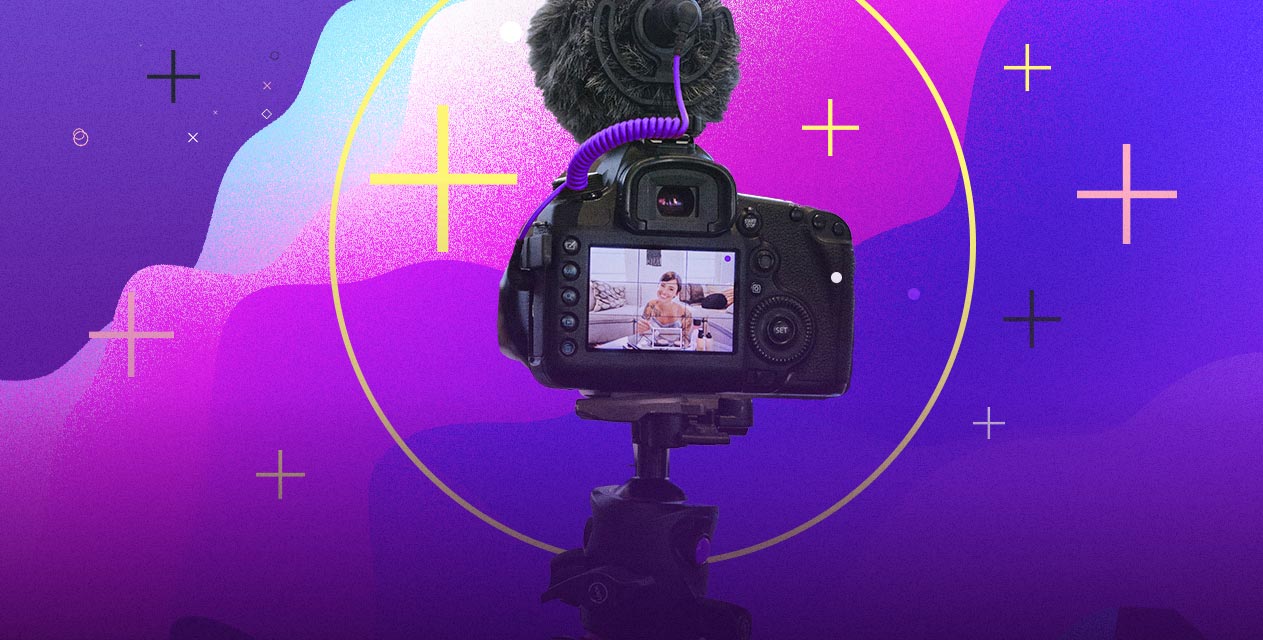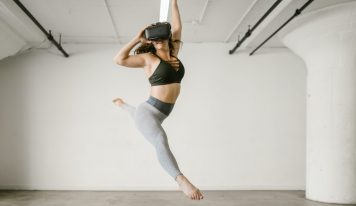Tips on using influencer marketing to amplify reach, improve engagement, and drop costs prepared together with creative platform Insense
With 92% of consumers now trusting influencers more than ads or traditional celebrity endorsements, it’s no surprise brands are increasingly looking to use influencer marketing to connect with potential customers. It’s the old ‘word of mouth’ effect, for the social media age.
But who are these influencers, and how can they help or hurt your brands? How can you gain their attention and connect with them in order to amplify your brand to all those who follow their advice? As we’ll see, the importance of an influencer isn’t just about their number of followers.
Influencer marketing blurs the line between commercial and personal content on social media, spreading information about your products in the form of a friendly recommendation. It’s gaining momentum: between 2016 and 2018 the number of sponsored influencer posts on Instagram more than doubled, from 9.7 million to 21.7 million, with more than $1 billion spent per year.

Influencer marketing is an attractive proposition for brands for both convenience and performance reasons. The 2018 State of Influencer Marketing Survey found nearly half of influencers posted about brands they liked even before any sponsored partnership. And 70% of marketers agreed that budgets for influencer marketing would increase in the coming year.
Influencers can have a clear effect on a brand by posting positively about it. The diversity of individuals and groups online allows great freedom for brands to connect with influencers and promote almost any type of B2B or B2C product in various niches, from beauty to technology.
Who are influencers, and where do we find them?
Put simply, influencers are opinion leaders. While many may be bloggers, that’s not always the case. Any person, brand, or group that is trusted by a wide audience can be an influencer.
Opinion leaders can be found anywhere that a large number of users gather and interact – for example in social networks, on forums, on video hosting sites. In terms of brand collaboration, Instagram is the most popular platform; it is used by 78% of influencers worldwide.
Influencer marketing is not one size fits all
While influencer marketing is increasingly popular, can impact brand performance, and is ubiquitous across a diverse array of brands and industries, each relationship is different.
So when you’re looking to collaborate with influencers, brands need to ensure they pay attention to some specific matters, and avoid common mistakes which could decrease effectiveness.
Choosing partners
It’s vital to look deeper than just likes and reach, and measure things such as targeted audience, location, previous campaign results, and collaboration costs. Low-tech promotion can become an issue, where companies offer cooperation with a blogger based on personal preferences rather than measuring the data on their audience and any prior campaigns.
Daniil Semonenko, Client Success Manager at Insense, says:
“If a single influencer’s creative starts trending, and a brand continues using it in ads, developing content in the same direction, the risk is that it can become outdated and stop attracting an audience.”
Another issue, says Semonenko, is working only with celebrities known by all brands.
“Things are different in the United States, where brands work with local creators more often, and collaborations are based on content and conversion measurements.”
Working with platforms for custom contention creation, and getting media metrics from bloggers, will solve this issue. For example, Insense can run targeted ads from an influencer in Facebook and Instagram and receive all performance data: CPM, CTR, website visits, clicks, etc.
The bloggers’ accounts are added to Business Manager and appear among ad placements. To get the most effective performance and best results, you should set up the ad account correctly.
Ilya Lagutin, CEO at Aitarget, says:
“The creative used by an advertiser is most important in modern marketing, it defines both the price that a customer pays per thousand impressions (due to relevance score), and the placement efficiency, and how the brand will be remembered.”
Ilya Lagutin adds that the creation of advertising materials, and their updating, are the priority tasks.
“Automation of work with influencers who know their audience well and platform features allows you to access a huge number of new effective advertising materials every day. This ia a global trend, demanded by our clients around the world.”
Building trust
For influencer marketing to work best, a brand needs to look for ways to integrate into an influencer’s content, rather than forcing an influencer to integrate into your brand.
An opinion maker knows their audience, and what kind of content works for them, and brands should harness this knowledge and influence. Based on Insense’s experience, some companies don’t try to make friends with influencers and work with them, instead imposing what they want.
This won’t work as well. While companies may have concerns that some influencers could damage their brand identity, the solution is to build trust with influencers as creators.
Daniil Semonenko says:
“The task of the brand is to explain to influencers clearly what can and cannot be done, and to outline the frames in which they should create the content, without narrowing these frames too much. Otherwise, an issue appears: bloggers start complaining that they don’t get likes under sponsored posts, because their audience doesn’t like them.”
Brands should give freedom to influencers, says Daniil Semonenko, while still keeping them within parameters. Insense moderates campaigns and ensures that even in controversial situations the brand can decide what content suits it and what doesn’t.
“So the client can control everything, down to the colours in the creative, without being overly strict on creators.”
Business vs creativity
While some influencers combine entrepreneurship and creativity, others focus on creativity and assign their business side to agents who work with deadlines and understand brand concerns. That’s why Insense offers to connect with influencers both directly and through agents.
Measurement
While brands want increased conversions, solely measuring those won’t reflect the effect that an advertisement had on an influencer’s audience. Influencers mainly affect brand awareness.
Daniil Semonenko says:
“The best CTR is achieved using a combination of Influencer Marketing and media support in the form of advertising campaigns on Facebook, Instagram and Google. When people see ads and recognise products their idol has already told them about, they click on links more willingly.”
Case Studies
So that’s the theory, what about the practice?
First, some tips on finding your influencer: before you begin promoting your products, examine the social networks of competitors and cases in your niche. Identify suitable influencers, evaluate your budget, and cooperate with the people who suit your best.
And now, working with influencers, Aitarget, and Insense, here are three different real-world case studies that demonstrate successful influencer marketing campaigns. Take a look at what influencer marketing managed to do for these brands, then plan your own.
Nestle Fitness and ELLE magazine

This project, a photo contest of Nestle Fitness and the ELLE magazine where participants posted photos of their stylish breakfast, was targeted at maximising audience reach and increasing response. Using Insense’s unique format and paid advertising on Instagram directed at the target audience, reach rose by 20% to 3.6 million (planned reach was 3.1 million), and audience engagement was tripled, at lower CPA.
Cleanly

Cleanly used custom Stories videos in a paid advertising campaign through Facebook resulted in 2.3 times lower CPM, a doubling of CTR, and almost halved the cost per click.
Zip My Dress

Zip My Dress is an accessory designed to help women get dressed without help and their objective was to attract new visitors to make a purchase. Insense ran an Instagram campaign on behalf of a blogger and targeted the brand’s target audience of divorced and widowed women aged 40+ (on the basis the product would find the greatest response among them). The results included more than $12,000 in purchase revenue and a 100% return on investment.
More than one campaign
When an influencer creates content for your brand, it could be used in other campaigns too — though you will need an additional agreement with the blogger in relation to the intellectual property rights for the creative. Take this into account in terms of the cost of cooperation.
The audience doesn’t like to be cheated
Keep in mind the nature of social influencers, and why their opinion matters to so many.
Social media posts that are clearly advertising can reduce the effectiveness of your brand’s integration with influencers. A post in a newsfeed shouldn’t look like 100% sponsored material. Such posts annoy an audience, and can decrease the number of responses.
The value of an influencer is their personal opinion. So marketing which doesn’t look like personal opinion is unprofitable for influencers too, as they lose their audience’s trust. Ensure that when you look at influencer marketing you let the influencer share your product in their way.
Summing up
From our shared experience, successful influencer marketing is based on:
- The ability to precisely measure previous and current campaigns;
- Examining cases in your niche and competitors’ experience;
- The characteristics of an opinion maker’s audience, location, and costs of cooperation;
- Creative solutions which integrate brands into influencers’ own content while keeping your brand identity safe at the same time; and
- Your ability to measure both conversions and a campaign’s impact on brand awareness.
So what kind of influence will your brand have?











